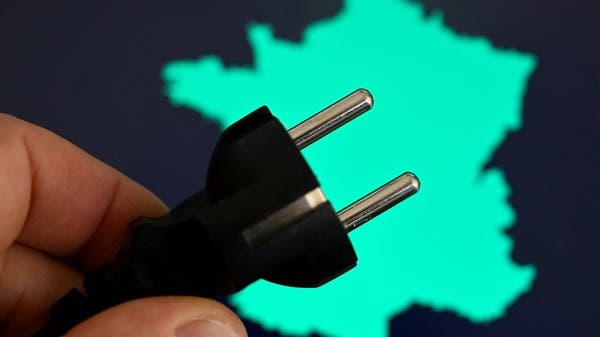The International Energy Agency said in a recent report that electric vehicles are the main technology that will contribute to the decarbonisation of road transport, a sector responsible for 16% of global emissions. Recent years have seen explosive growth in EV sales, along with improved performance and wider availability of their models.
Electric cars are becoming increasingly popular with passengers, as the Energy Agency estimates that 13% of new cars sold in 2022 will be electric, and if the growth that has occurred over the past two years continues, emissions of carbon dioxide from cars can be put on a path consistent with achieving net-zero emissions by 2050.
EV sales hit a record high in 2021, despite continued disruption to supply chains due to the COVID-19 pandemic. Compared to 2020, sales nearly doubled to 6.6 million units, bringing the total number of EVs on the road to 16.5 million. The share of electric vehicle sales increased by 4 percentage points in 2021.
The scenario of achieving zero emissions by 2050 sees an increase in the number of electric vehicles on the roads to over 300 million cars in 2030, such that these vehicles represent 60% of new car sales, and access to the right road requires an increase in the share of their sales of 6% per annum.
Sales in 2021 were highest in China with 3.3 million vehicles (three times higher than 2020 sales), followed by Europe with 2.3 million EVs sold in 2021 (up from 1.4 million of units in 2020). In the United States, EV sales doubled their market share to 4.5% in 2021, reaching 630,000 units. In emerging markets, EV sales have more than doubled, but sales volumes have remained low. For the first half of 2022, sales have increased further and the International Energy Agency estimates that the share of global EV sales will be around 13% of the total, which will be an all-time high.
Electricity consumption
In 2021, the global EV fleet consumed around 50 terawatt hours of electricity, which is less than 0.5% of the world’s current total electricity consumption. The use of electric vehicles saved about 0.3 million barrels a day of oil in 2021. Electric vehicles will need to save more than 7 million barrels a day of oil in 2030, to align with the zero emissions scenario by the 2050.
Energy density is critical to ensure the efficiency of electric vehicle batteries. The energy density of electric vehicle batteries has increased over the last year and now some of the highest performing battery cells can achieve energy densities in excess of 300 watt hours, an increase from about 100-150 watt hours a decade ago, meaning electric cars can now travel twice as far.
However, it’s not just about energy intensity, reducing the need for biominerals is a priority in electric vehicle innovation. Last year saw a doubling of the market share of lithium iron phosphate batteries, which do not use nickel or cobalt in their manufacture, and this is due to innovative technologies.
charging points
Publicly available electric vehicle charging stations increased by nearly 40% in 2021, although the growth rate in 2020 was 45% higher. However, 500,000 public charging points were built in 2021, more than the total inventory of available chargers in 2017. Growth has slowed at slow-transit facilities (33% in 2021, compared to 46% in 2020).
China continues to lead the way in the number of publicly available charging stations, accounting for around 85% of fast chargers and 55% of slow chargers worldwide. In 2021, 680,000 slow chargers were installed in China, followed by Europe with over 300,000 chargers (+30% compared to 2020) and the United States with 92,000 charging stations (+12% compared to 2020).
The number of fast chargers reached nearly 470,000 devices in China in 2021 (a 52% increase from 2020), while the number in Europe rose to nearly 50,000 devices, followed by the United States at 22,000 devices. By 2030, the zero-emissions scenario will see 18 million public charging stations installed. Consumers worldwide spent an estimated $250 billion on electric vehicle purchases in 2021.
In early 2022, India tendered for the purchase and distribution of more than 5,000 electric buses in five major cities and the contract was awarded at half the price achieved in previous tenders. A Chilean public-private joint venture is also seeking a loan to finance a fleet of 1,000 electric buses in Santiago.
purchase costs
Global battery production capacity is set to increase from under 200 gigawatt-hours in 2019 to over 1,200 gigawatt-hours in 2024, after massive capital expenditures by listed battery makers in 2021, as it rebounded after a severe recession. -19″ pandemic. In 2021, China will lead the global battery manufacturing market by controlling about 75% of the global total, followed by the United States, Hungary and Germany.
Despite the prospects for electric cars, they are not yet a global phenomenon, according to the International Energy Agency, as sales in developing and emerging countries remain sluggish due to high acquisition costs and lack of infrastructure of charging.
Therefore, more work is needed in other sectors to meet the goal of achieving zero emissions by 2050, indicating that there are encouraging signs of progress in a number of sectors.
Overall, the rest of the picture is more challenging, as there are 23 sectors that are not on track to meet the 2050 targets, with another 30 sectors needing more effort. Areas not on track include improving energy efficiency in building design, developing clean and efficient district heating, phasing out coal-fired power generation and eliminating methane flaring, converting aviation and navigation in cleaner fuels and cleaner cement, chemicals and steel production. to the international agency.


